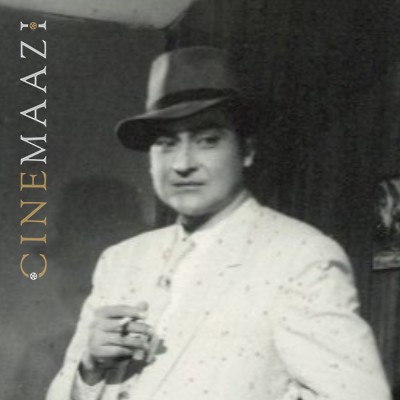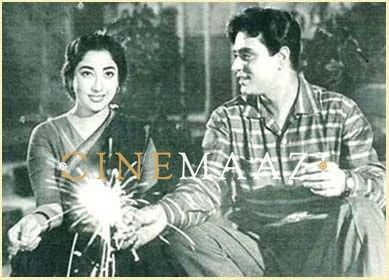Marshall Braganza

Subscribe to read full article
This section is for paid subscribers only. Our subscription is only $37/- for one full year.
You get unlimited access to all paid section and features on the website with this subscription.
Not ready for a full subscription?
You can access this article for $2 , and have it saved to your account for one year.
- Primary Cinema: Hindi
Accomplished cinematographer Marshall Braganza was known for his fluid and sublime cinematography in several well-known films including Kohraa (1964), Bees Saal Baad (1962), Anarkali (1953), Tumsa Nahin Dekha (1957), Shaheed (1948), Munimji (1955), Aangan (1959), Phir Wohi Dil Laya Hoon (1963) and Atithee (1978). He was known for devising innovative ways of shooting films, including Kohraa, for which he shot a song following the lead pair Waheeda Rehman and Biswajeet Chatterjee in a moving car, with the camera mounted upside down. His career, from the 1950s through the 1970s, saw him cinematograph various genres of films, from comedies to thrillers and family dramas.
Braganza first came to attention in 1953 with his work in Anarkali, the historical romance directed by Nandlal Jaswantlal. It revolved around the misunderstandings that arise between Akbar and his son Salim when the former disapproves of his son's love. Written by Hameed Butt, Nasir Hussain and Ramesh Saigal, the film starred Bina Rai, Pradeep Kumar, and Kuldip Kaur. Upon release, it became the top-grossing Hindi film in the year of its release.
In 1957, he cinematographed Tumsa Nahin Dekha, a romantic drama produced by Sashadhar Mukherjee, written and directed by Nasir Hussain. The film was said to be conceived as a star vehicle for its heroine Ameeta, who was the protégée of Filmistan Studios’ owner Tolaram Jalan. Special attention was paid to her make-up, wardrobe and lighting; however, the film’s huge success at the box office boosted the career of the then-struggling Shammi Kapoor. Kapoor’s first light-hearted musical, it made him an overnight sensation.
Braganza’s work won approval in Bees Saal Baad (1962), the mystery thriller directed by Biren Nag. Starring Biswajeet Chatterjee, Waheeda Rehman, and Manmohan Krishna, the plot revolved around a young man, whose family gets haunted by a spirit. When he is warned not to return to his hometown, he decides to investigate the issue. The film topped the box office chart, becoming a super-hit. The song Kahin deep jale kahin dil, rendered by Lata Mangeshkar, also became very popular.
Another key film he cinematographed was Phir Wohi Dil Laya Hoon, a musical romance starring Joy Mukherjee and Asha Parekh, which also became a super-hit at the box office.
His work was much appreciated in Biren Nag’s Kohraa (1964), based on Daphne du Maurier’s much-appreciated novel Rebecca. Film historian Gautam Chintamani writes, “Marshall Braganza’s fluid black and white cinematography visually enhanced the high contrast that is inherent in both the film’s art direction as well as narrative. The sequences where Amit and Raj meet for the first time at the edge of a cliff is an unlikely meet-cute (a ploy to make the protagonists meet) for Hindi cinema – she is considering ending his life and he is embarrassed to see that she might think he’s contemplating suicide – and the one where Amit is battling his conscience that urges him to accept the fact that he murdered Poonam are brilliantly photographed by Braganza.” For the song Yeh nayan dare dare picturised on Waheeda Rehman and Biswajeet Chatterjee in a car, the couple was picturised driving up a winding road to Mahabaleshwar and lip-synching to Kaifi Azmi-penned beautiful poetry. Braganza apparently followed the couple in a running car with the camera mounted upside down and shot a sequence which still leaves techno-wizzes awestruck.
Earlier, in 1948, he served as the director of photography for Shaheed, the Ramesh Saigal-directorial starring Dilip Kumar and Kamini Kaushal. A romantic drama set in 1940s India, it revolved around a young freedom fighter who faces opposition from his father as well as an ambitious police officer, who is also his rival for the affection of a mutual childhood sweetheart.
In 1955, he cinematographed Munimji, a romantic comedy film starring Dev Anand and Nalini Jaywant, and directed by Subodh Mukherjee.
The following year, he worked on the comedy Ham Sab Chor Hain (1956), directed by I S Johar. Starring I S Johar, Majnu and Shammi Kapoor, it revolved around two happy-go-lucky guys who are up to all kinds of tricks to make a comfortable living for themselves.
It was followed by Aangan in 1959, a romantic musical directed by O P Dutta and starring Agha, Ameeta and Rehman Khan.
Dosti, the 1964 directorial of Satyen Bose, saw him work on a family drama starring Sudhir Kumar, Sushil Kumar and Sanjay Khan. Produced by Tarachand Barjatya, and distributed by Rajshri Productions, the film focused on the friendship between two boys: one blind and the other physically disabled. It was amongst the top ten highest-grossing films of 1964, and was declared a super-hit at the box office. It was also screened at the 4th Moscow International Film Festival, and won several Filmfare awards.
Mere Lal (1966) saw him collaborate again with director Satyen Bose to cinematograph this drama film, starring Dev Kumar, Indrani Mukherjee and Mala Sinha. It focused on a stone-hearted dacoit who, when thrust with the responsibility of bringing up a lost child he finds on a riverbank, mends his ways and becomes an honest wage-earner. A commercial success, the film was hailed for its poignant moments that could “melt the tears of the stone-hearted among the audience.”
In 1968, he cinematographed the film Suhaag Raat, directed by R Bhattacharya. A romantic drama starring Rajshree and Jeetendra, the plot of the film revolved around a woman who gets widowed on her wedding night and creates a scandal by becoming pregnant.
Fauji, the action genre film that he cinematographed in 1976, was directed by Joginder Shelly and starred Vikram Makandar, Romesh Sharma and Nazneen. It told of two brave jawans, who unite the cowering villagers and, with the help of a group of students, fight against the atrocities of a notorious dacoit and in a final showdown kill him to free the village from his menace.
He went on to cinematograph the comedy film Jalan in 1978, directed by H A Rahi and starring I S Johar, Mehmood and Ambika Johar.
The same year, he also worked on Atithee (1978), a romantic drama directed by Aravind Sen. With a cast comprising Shashi Kapoor, Shabana Azmi and Shatrughan Sinha, the film was based on the 1971 Bengali film Ekhane Pinjar. It told of Navendhu Kumar, who lives a poor lifestyle with his handicapped father, Mohan, mother, two unmarried sisters, Leela and Rajni, a younger brother, Kundan, and a sweetheart Meena. He works for Avinash Gupta; however, when differences occur, he is framed by Gupta for breaking and entering. Arrested by the police, he is tried in court, and exiled from the town for a period of 12 months. After he leaves, the family is almost destitute and is exploited by Gupta. Some months later, a young man, Anand, comes to visit them, informing them that Navendhu has sent him. He gives them some money for day to day expenses, gets clothes for everyone, and a wheelchair for Mohan. He arranges the marriage of Rajni with her boyfriend, Ajay, despite strong opposition from Gupta, and falls in love with Leela. What the Kumar family does not know is that Anand is a fugitive on the run from the police in Bombay, and he harbours a dark secret that will change their lives forever.
References
https://www2.bfi.org.uk/films-tv-people/4ce2baa62609d
HTTPS://WWW.IMDB.COM/NAME/NM0103867/
HTTPS://TIMESOFINDIA.INDIATIMES.COM/ENTERTAINMENT/HINDI/BOLLYWOOD/
NEWS/THE-MYSTERY-OF-KOHRAA/ARTICLESHOW/42595841.CMS
HTTPS://NEWS.ABPLIVE.COM/BLOG/KOHRAA-480420










.jpg)



